If you're a true history buff, you really can't miss this gallery - it's amazing, even if we do say so ourselves. We've got all the famous people of the past here, from ancient Egypt to violent medieval times to Victorian literature, so settle in for an exciting ride through time. Oh, we think William Shakespeare totally looks like Dennis Hopper, King Tut's reconstruction will totally stun you and Cleopatra's reconstruction caused some major controversy and left many people upset. Enter if you dare!
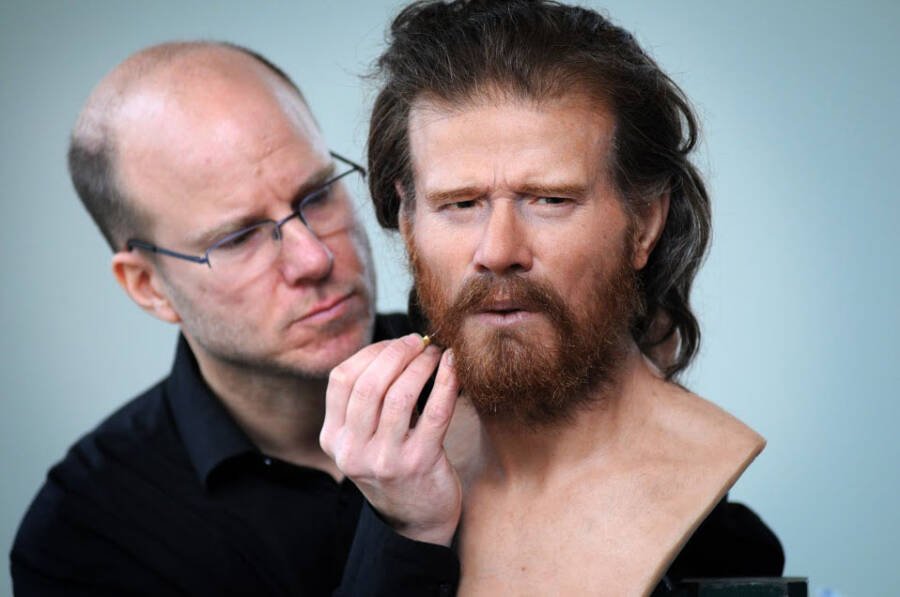
We're not sure if we're happy or sad about this awesome development in technology. One thing is for sure, though: we're definitely fascinated! While CGI imaging certainly takes some of the mystery out of our favorite historical figures, we can't help but marvel at what they really would have looked like.
We have to admit that it can get pretty annoying trying to imagine what people of the past looked like based on just a sculpture, bad portrait, or in some cases, actual skeletons. We need to imagine them as living, breathing people! Luckily, today's advanced CGI technology offers exactly that.
No, it's not a joke, Santa Claus IS real and he's actually quite creepy - facially, that is. He wasn't made a saint for no reason. So, who is the man behind the myth? Saint Nicholas was also known as Nikolaos of Myra; a 4th Century Christian Saint and Greek Bishop of Myra. How we came to believe that Santa Claus lives in the North Pole gets a little confusing by this point considering the fact that he was a Bishop who resided in Patara, Turkey!
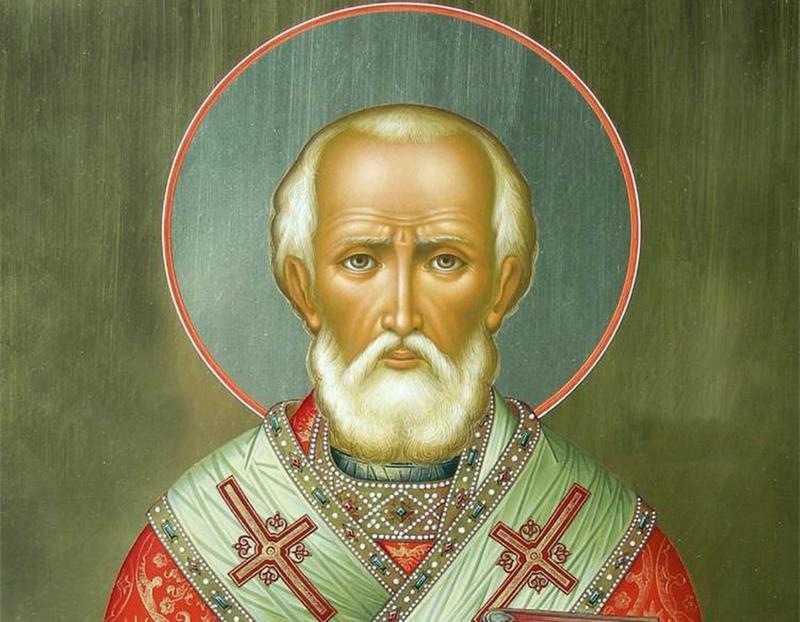
St. Nicholas had quite the reputation as a wonderworker as he would often practice secret gift giving by leaving coins in children's shoes, and so the tradition of Christmas was born. However, the saint was a patron of many things, including sailors, merchants, archers, repentant thieves, and pawnbrokers. Busy guy.
So, you're probably wondering by now why St. Nicholas looks completely different to every depiction or representation that we've seen of him. Good question. Considering his Turkish heritage, it would seem obvious that Saint Nicholas, who would later become the blueprint for the fictional Santa Claus, wouldn't have rosy cheeks and pale white skin. Instead he would be of a darker skin tone, which you can see from the CGI 3D recreation of Saint Nick.
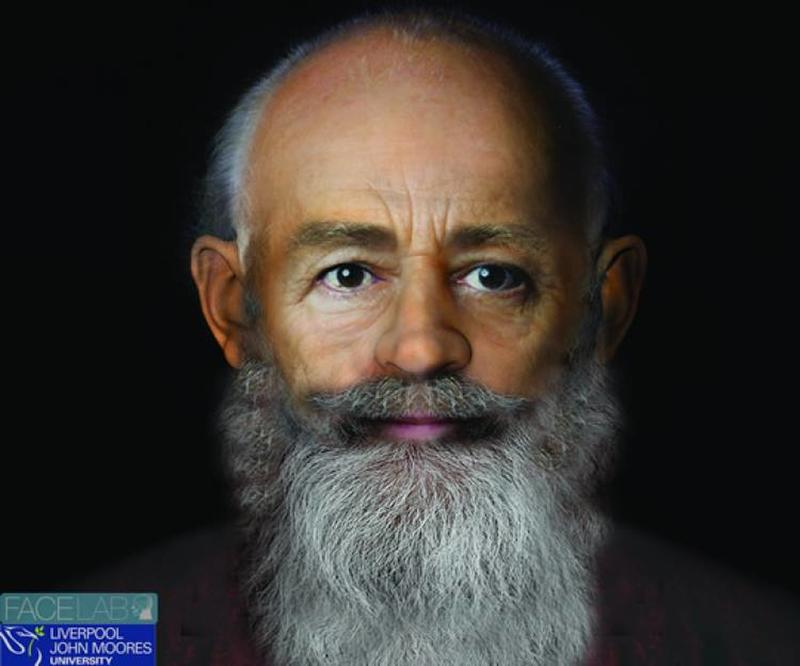
In Western cultures it's not all too uncommon for people to assume the whiteness of historical figures. We mean, just look at Jesus. Born in Jerusalem and we still assume that he was white? It would seem that Saint Nick went under the same white washing. At least they got the beard and hair though, right? The eyes are pretty terrifying, though.
Simon Bolivar was certainly one the most influential figureheads in world history. So, sit back, and let us tell you all about him. Simon Bolivar was a Venezuelan military leader who played a pivotal role in the revolutions against the Spanish Empire. The South American soldier was born into considerable wealth and sent to Spain for his education, where he quickly got caught up in the European political landscapes.
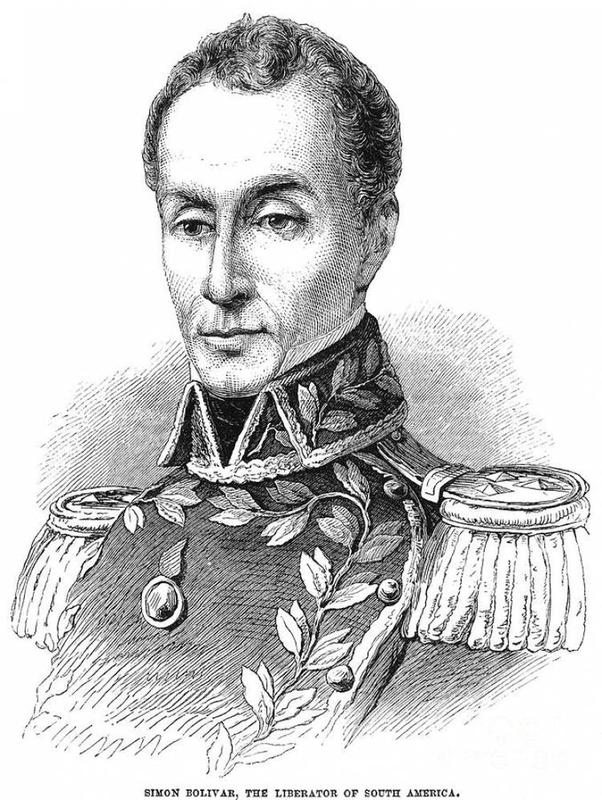
He just couldn't help getting caught up in the resistance movement - when France invaded Spain he was hailed by many as 'El Libertador' in English; The Liberator. Sadly, he died not too long after in 1830. He may have faced some fearful opposition in his time, but the final battle which finished him off was with Tuberculosis.
You would be forgiven for thinking that the CGI reconstruction of Simon Bolivar was an image of an actual human being. The digital sculpture was created by a forensic imagery team who spent an entire year going through historical documents with a little help from the Venezuelan government to create the most accurate representation of his legendary face as humanly possible.
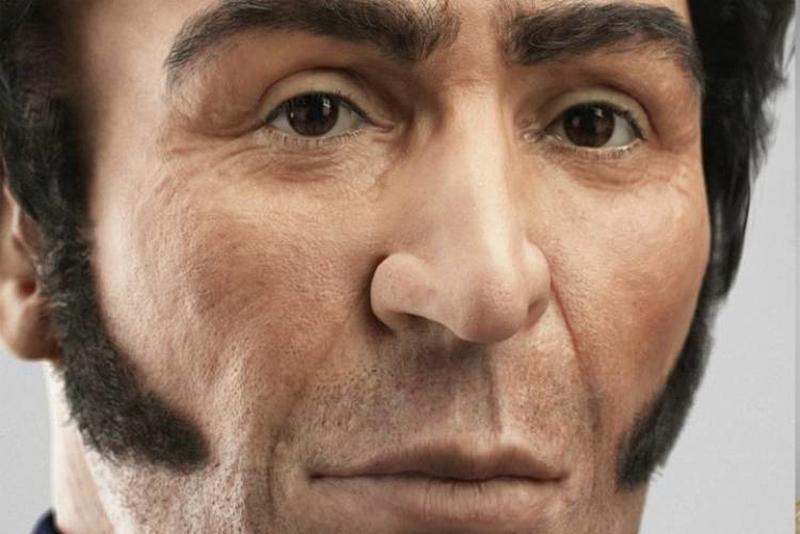
If the results are true to form then it would be safe to say that he was quite the aesthetically pleasing character, which was never really evident in the more cartoonish portraits and illustrations which were created to immortalize his heroic life. He was actually pretty cute; in a 3D kind of way, that is. The reconstruction was unveiled on the 229th anniversary of the political legend's birth and currently sits in central Caracas.
Here's a little fun fact for our Game of Thrones audience; the Red Wedding scene was actually inspired by some of King Robert I's shenanigans! That's got you interested hasn't it? It turns out that Robert the Bruce was very much the macabre character himself. Well, what would you expect from one of the most fearsome Scottish kings who ever lived?
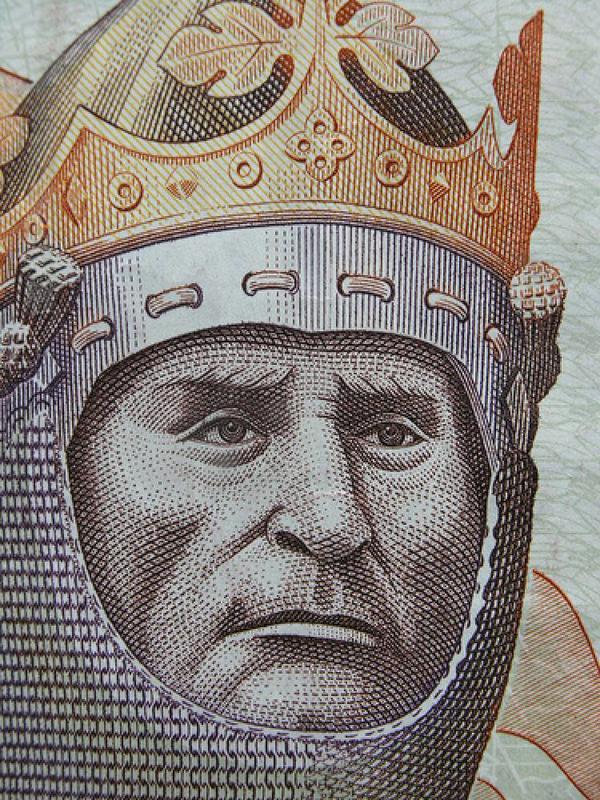
Back in the 1300s, it wasn't all sitting around in fancy golden outfits - during his rule, Robert the Bruce led the Scottish people during the wars of independence against England and succeeded. There's no wonder he's still hailed as a national hero to this day in Scotland for his bludgeoner bravery. It saw him live for a relatively long time as a warrior king, until the age of 55 when he passed away in 1329.
So, was Robert the Bruce the fearless leader that you'd expect him to be? Was he bold, brave, and strapping? We're sure you will all agree that as a matter of fact he was true to form and legend - if anything, he looked a damn sight better than what his portraits would have you believe. The CGI restoration wouldn't have been able to give any indication to his facial hair preferences but he definitely looks like someone that you wouldn't dare to mess with.
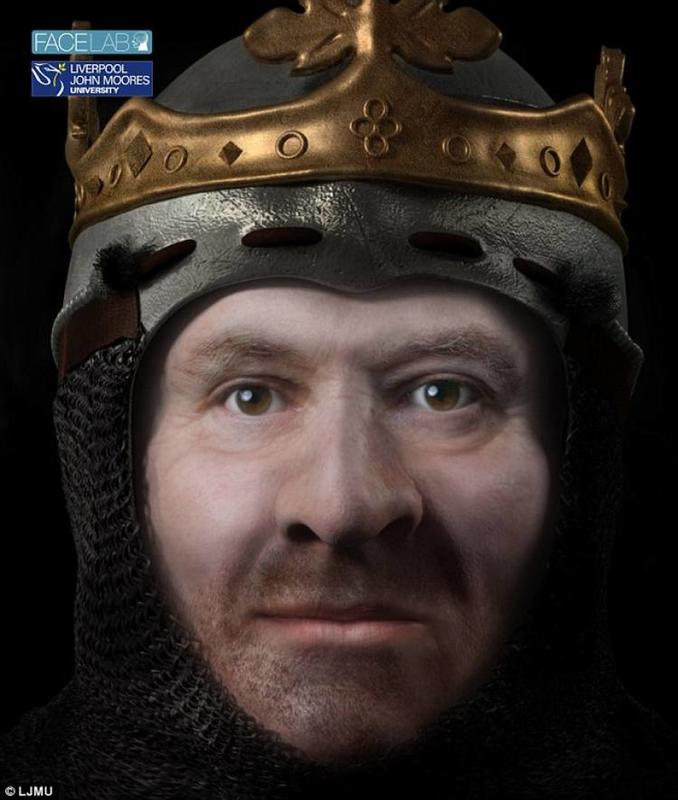
In fact, Robert the Bruce wouldn't look out of place if he were cast in Game of Thrones. You can start to see why George RR Martin took so much inspiration from his legacy, given the fact that he looks rather similar to Stannis Baratheon. Ahh, isn't modern technology just marvelous?
Henry IV of France was also pretty well-known under the name of 'Good King Henry'. His subjects seemed to fall at his feet during his rule of Navarre from 1572 to 1610, during which time he kept the throne warm as the King of France from 1589 to 1610. What happened after 1610? Yeah you guessed it, Kings don't tend to live after they've been dethroned, do they?
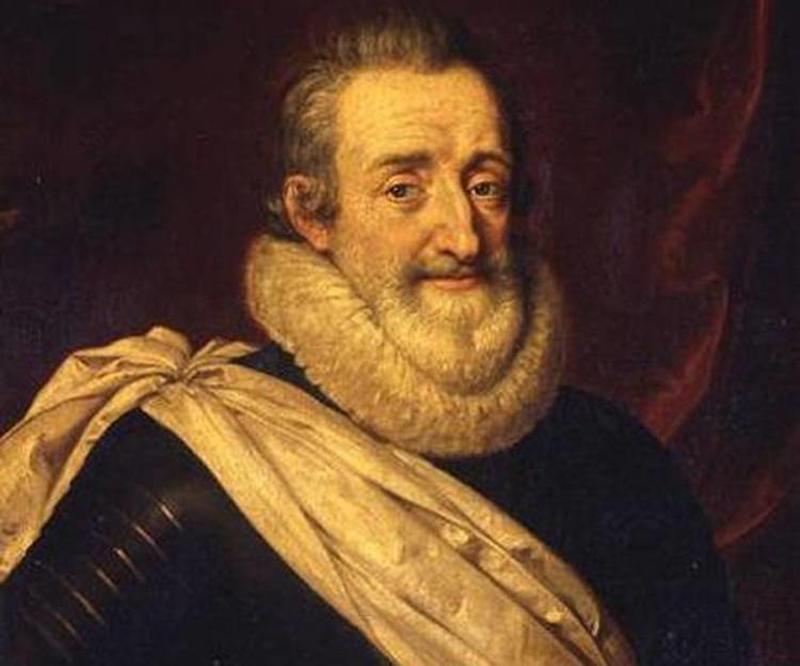
King Henry IV made history in his involvement with the French Wars of Religion, and as you can imagine, he made a fair few Catholic enemies waging that war, which led to his attempted assassination in the St. Bartholomew's Day Massacre. He was eventually executed by a catholic fanatic named François Ravaillac on the third attempt on his life. What a price to pay for religious tolerance, eh?
Whilst the skull from which the forensic facial reconstruction was based upon was pretty gnarly and frankly terrifying, it turns out that Good King Henry almost looked like what you'd expect Santa Claus to look like. A kind faced elderly man who looked aged beyond his years considering he died at age 57. All of those battles must have taken their toll on King Henry.
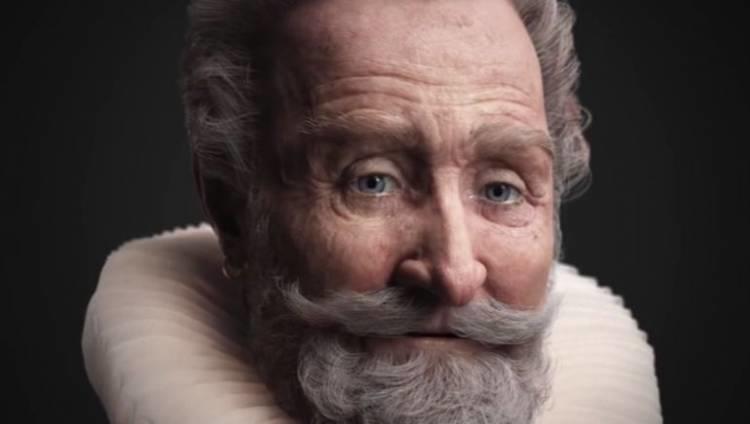
So, how does he compare to his portraits? It's hard to say given the fact that looking at each of them he looks like an entirely different person. Perhaps some of the portrait artists were kinder than others, on a lot of the portraits he seemed to have a quite obtrusive double chin thing going on, maybe that's why those ruffled collars were so popular back then? It's quite possible.
Have you ever wondered what one of the greatest German composers of the Baroque era looked like? Well, now you don't have to. If you're wondering who the hell Johann Sebastian Bach is, let us explain. Johann Sebastian Bach was born in 1685 and had pretty good innings considering he died in 1750. During his lifetime he amassed an impressive amount of achievements, but would become most famous for his composition, Toccata and Fugue in D Minor, that was orchestrated to be played on the organ.
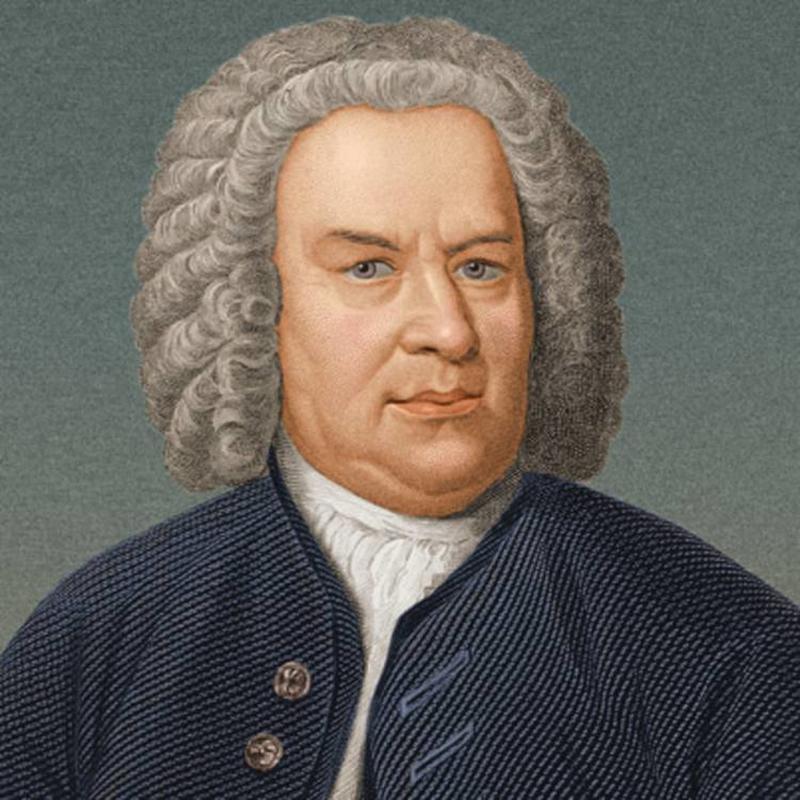
To say he revolutionized and enhanced the soundscapes would be quite the understatement. He had so many skills when it came to counterpoint, harmonic, and motivic organization, and alongside his revolutionary adaptation of rhythms, forms, and textures, there have been few composers to have ever displayed the same artistic and intellectual depth.
If you're still with us after that rather complex musical lesson, let's get down to the gritty stuff and the reason why you're here. The technology that went into this particular facial reconstruction was almost beyond belief. It doesn't get much more realistic than that, but did he look anything like his portrait suggested?

By this point in the list it's becoming evident that portrait artists really weren't all too kind to their subjects. JS Bach was often depicted as either mean or a little gone behind the eyes, which is so far from the truth. JS Bach's facial reconstruction didn't just remain on screen - his face was restored by a Scottish anthropologist who kindly put together a video for us all to view and get lost in the tender wonderment of her artistic skill.
Also known as 'the last missionary', Giovanni Battista Sidotti lived a pretty exciting (for lack of a better word) life. Giovanni was Born in 1668, and the Italian secular priest and Apostolic missionary met his demise through not being able to stick to the rules. The naughty little scamp headed over to Japan during a time in which it was illegal to do so.
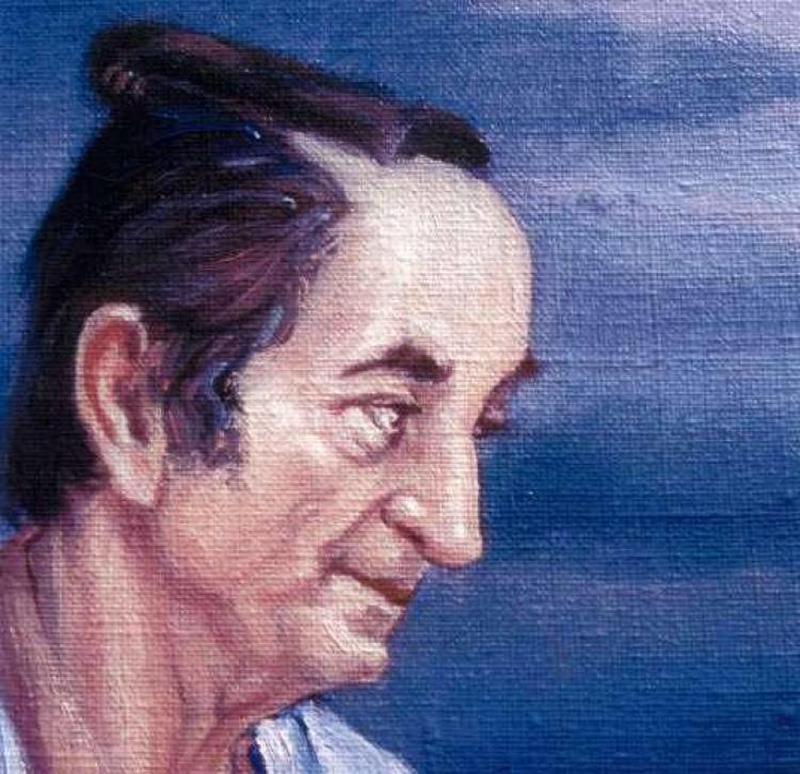
It didn't take long for the Japanese to capture him and hold him in confinement until his death in November 1714. Giovanni decided to embark on the trip that would inevitably lead to his demise after hearing tales of missionary martyrdom in Japan. Well, why not? His disguise as a Samurai warrior didn't work all too well given his Western aesthetic, so it wasn't too long before he was caught out and captured.
Considering that Giovanni's remains were relatively fresh in comparison to some of the Ancient Egyptian figureheads featured on this list, forensic anthropologists didn't find it all too hard to reconstruct his face, given how ridiculously life like the CGI 3D model appears. Although the skull which was exhumed wasn't in the best shape, they were still able to work their magic to blow us away.

The battered remains were first discovered in 2014 as part of a historical excavation which cost a hefty two million Japanese yen to complete. So, was it worth it? Given the fact in all of his other portraits that are intended to give us an idea of what he looks like look like they've been painted by Edvard Munch, it's clear that the two million was pretty well spent.
Nefertiti was the wife of the Egyptian Pharaoh, Akhenaten, and together they made quite the name for themselves as they headed up a religious revolution back in the 18th dynasty of Egypt. Switching things up a little, they worshipped only one god named 'Aten' or the sun disc. They ended up creating an entirely new religion which changed the landscape of God worship all across Egypt.
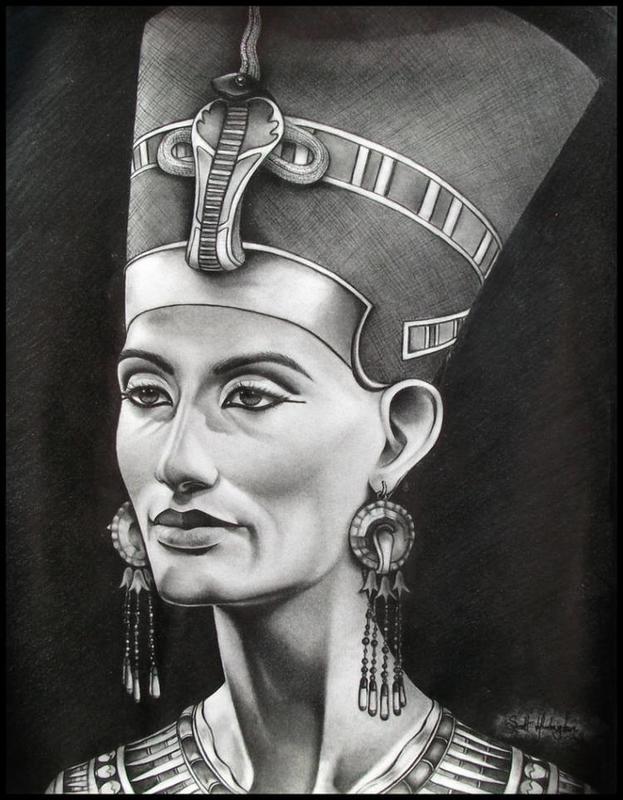
At the side of her husband she enjoyed reigning over Egypt at a time when Ancient Egypt was at its wealthiest. Historians can't be sure whether Nefertiti ruled under the name of Nefemeferuaten after King Akhenaten died, which happened just before the ascension of the infamous pharaoh Tutankhamun. Her name had the meaning "the beauty has come" in Ancient Egypt, but how does Nefertiti hold up by today's impossible standards?
Nefertiti is the second Ancient Egyptian figurehead to feature on our list whose mummy has undergone reconstruction. We were already disappointed by Tutankhamun, but it's safe to say that Queen Nefertiti's beauty is timeless. There's no wonder that the statue of her bust ended up in so many people's living rooms. Astonishingly, the statute was very true to her divine form.

However, it turned out that after Nefertiti's glorious face was reconstructed there was quite the race debate as critics flooded in to argue that she had been whitewashed. Which actually seems pretty likely. Considering the fact that she lived in Egypt, you'd think that they would be able to get the color of her skin right since they spent over 500 hours creating the model from her 3400-year-old mummy that was discovered in 1898.
Mary Queen of Scots had a pretty interesting life. It's quite hard to imagine what it would be like to be shipped off to France aged five, only to come back fourteen years later as a widow. When she returned to Scotland she came ashore in a time of quite significant religious strife. Those fanatics are everywhere, aren't they?

Queen Mary succeeded the throne after her father King James V died just days after her birth, which meant that her rule was carried out by regents for most of her early years. It wasn't all plain sailing as Queen - she thought she could flee to England to find sanctuary with her cousin Queen Elizabeth I, but she was imprisoned. Mary Queen of Scots decided to pay her back by plotting to assassinate her, which subsequently led to her execution.
A team of experts at the university of Dundee got a little bit curious about what Mary Queen of Scots actually looked like throughout the ages of 19 and 26. They put their genius minds together and created a staggeringly human CGI rendering. The breathtakingly detailed model was created using pretty fancy 3D modelling software and craniofacial templates. Modern technology is just marvelous, isn't it?
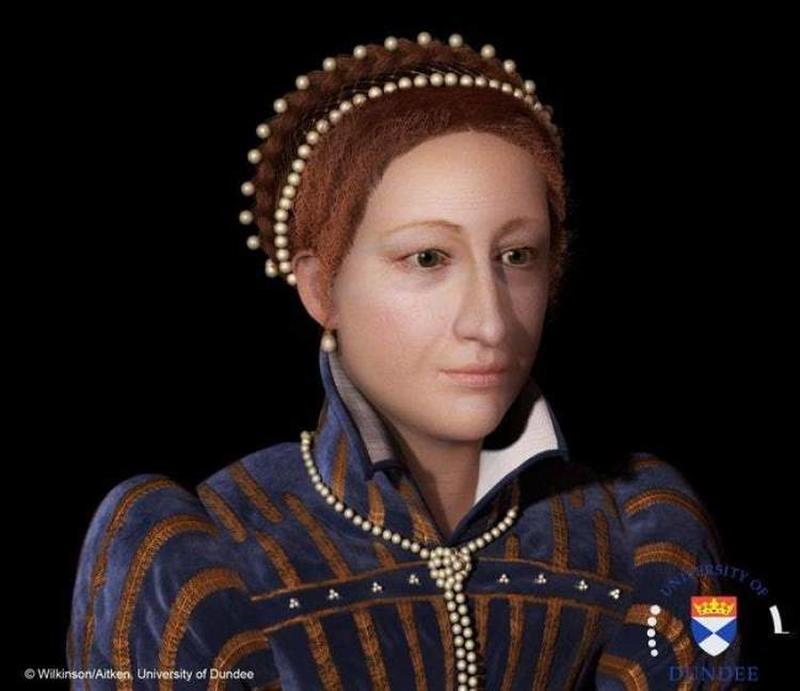
One thing is for sure, Mary Queen of Scots looks a hell of a lot more human than she did in any of her most famous portraits, which made it pretty hard to imagine what she actually looked like in real life. Thanks to the reconstruction, history buffs are now able to more accurately imagine how the infamous queen would have looked if you passed by her in the street.
How does one go about getting a title that will stand the test of time, such as the 'Griffin Warrior'? Well, it turns out that historians don't actually know all that much about the history of the fabled Griffin Warrior, and at best guess they've assumed the man to be a Mycenean warrior or priest. Sadly, there's no epic tale to tell of his valiant efforts on the battle but uncovering the Mycenean warrior's tomb opened up a whole new can of worms entirely.
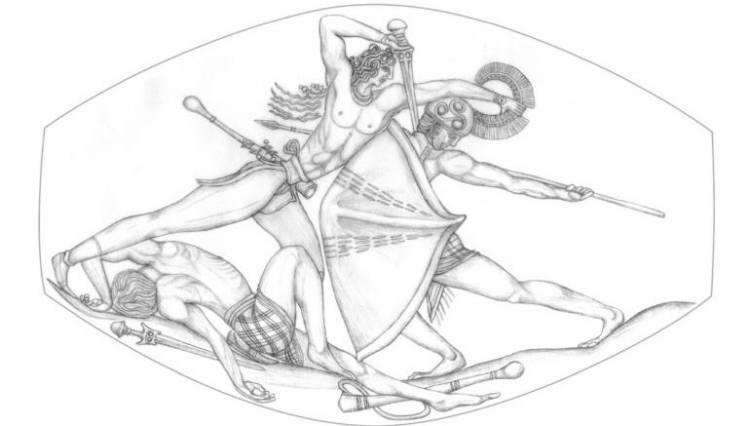
It was the tiny and intricate engraving on the tomb of the Griffin Warrior that left the archaeologists questioning whether anything they thought they knew about Ancient Greece was true. This led to the Greek Ministry of Culture dubbing the excavation of the tomb the most important discovery in Greece in 65 years.
Whilst the trinkets found in the Bronze Age shaft tomb were of high appeal to the archaeologists, let's not forget the face of the man who was buried amongst them. With a corpse almost as old as Ava, it's amazing to see what the experts could achieve bringing the warrior to life - and dare we say, he's actually rather attractive and pretty much everything that you'd expect a fearless warrior to look like.
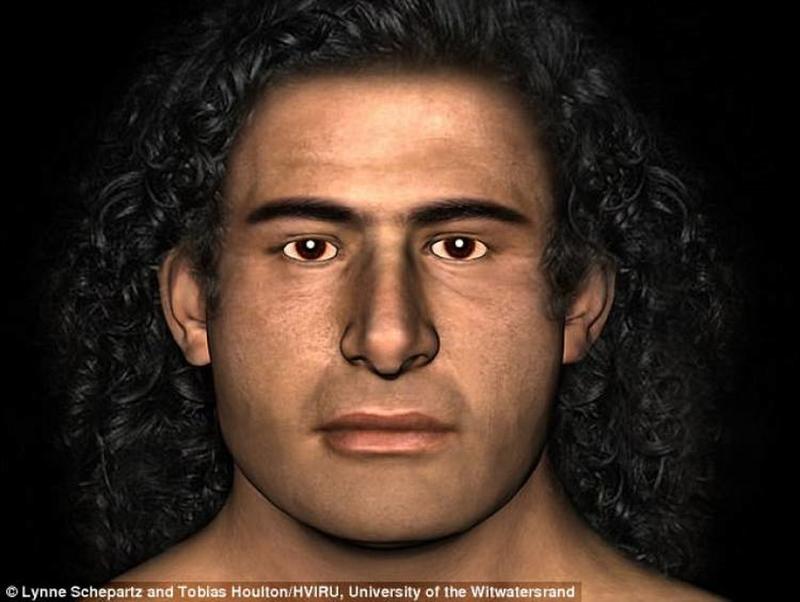
For now, who the golden warrior was still remains a mystery in terms of his identity, however, given the recent advancements of science and technology it wouldn't be all that surprising for them to resurrect him and ask him themselves in the near future. Your average Joe wouldn't be buried with around 1,400 trinkets which included weapons and gold artefacts, would they?
Maximilien François Marie Isidore de Robespierre, better known as Maximilien de Robespierre (it's still a bit of a mouthful, isn't it?) was one of the most influential figures of the French Revolution. Don't worry if you weren't paying attention in history class. We'll bring you bang up to date on the antics of the French lawyer and politician. He counted himself as a member of the Estates General Constituent Assembly and the Jacobin Club and he was quite the forward thinker.
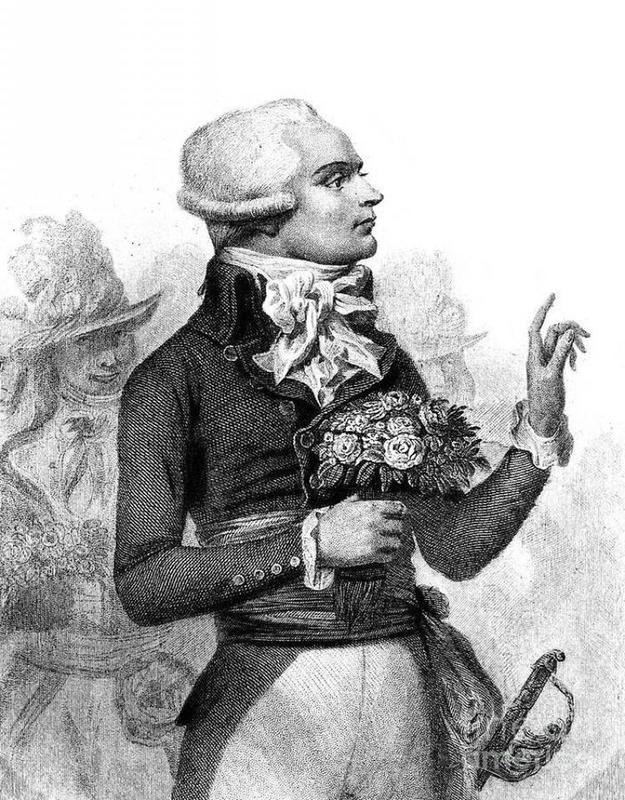
Maximilien de Robespierre bravely opposed the death penalty, supported equal rights, and advocated the abolishment of slavery, amongst many other noble deeds. What a guy. Imagining what he went through in the revolution which became commonly known as the Reign of Terror is pretty impossible. He met his early demise in 1794, aged 36.
We may not be able to imagine what he would have been through in his relatively short lifetime, but at least now we know what he looked like! We have an accurate face to put to his impossibly long name, and well, he may be no oil painting, but who the hell cares? He was an absolute hero. His libertarian approach to politics was probably responsible for a great shift in the political landscape.

He may not look as regally flawless in the 3D representation which was created back in 2013 by forensic pathologist Phillipe Charlier and reconstruction specialist Phillipe Froesch - it's not exactly flattering is it? But when did reality ever match expectation anyway? At least he was beautiful on the inside. Even the reconstruction team couldn't have guessed the outcome of the 3D rendering.
Saint Anthony is one of the most aesthetically pleasing patron saints ever depicted through art, or was he? We'll get to that part later, but what really can't be argued is the fact that St. Anthony lived an extraordinary life as a Portuguese Catholic Priest and the friar of the Franciscan order. To this day, he remains one of the most popular priests that ever lived, even if he was the Patron Saint of lost and stolen articles.
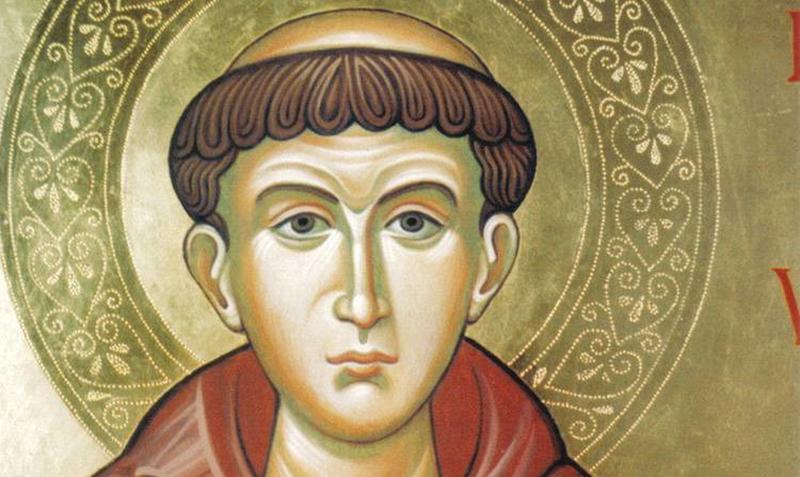
Well, we suppose there are worse things to go down in the history books for. You'll probably be able to recognize him from the images where he is infamously portrayed holding baby Jesus in his arms. He was born in 1195 and entered the religious order at age 15. There was no easy street for St. Anthony.
As you'd expect from anyone with a hard, pious paper round, St. Anthony didn't look that similar to the most popular depictions of him. Did you almost forget about the ridiculous haircuts that came with being a friar? It's one thing to meet your idols, but to see them after being recreated through CGI rendering is quite another. It would seem that he never quite had cheekbones that would cut glass and never had the Eastern European look he was so often depicted with.

Whilst St. Anthony may have not carried a halo of perfectly sculpted hair, what he did carry was a pensive glare which tells us more about his harrowing life of ups and downs than any flowery representation could have done. Well, you didn't think being part of a religious order was easy, did you?
Anyone into their Ancient Egyptian history will be in absolute heaven by this point - Tutankhamun, Nefertiti and Cleopatra weren't the only figureheads to be brought to life some 2000 years later. Meritamun (meaning beloved of the God Amun) was the daughter and eventually the wife (not cool) of Pharaoh Ramesses the Great who was infamous for expanding the Egyptian empire into Syria, Libya and Old Nubia.

The cause of Meritamun's death is still a mystery, however, entomologists are hazarding a guess at either anemia or through infection caused by a tooth abscess. Nice. Not exactly the end you would have predicted for one of the most glamourous great wives of one of the most infamous Pharaohs to have ever lived; even if a lot of details of her life have been lost to the history books.
Meritamun's face was reconstructed using her mummified head, which dated back at least two millennia, by a team of experts at Melbourne University - and they're not stopping there. After bringing Meritamun to life through a complex process of 3D rendering, they're still working on answering questions surrounding her death, and even trying to get an idea of what the divine regal Egyptian ate for breakfast. It's said that they've brought Meritamun to life, and if they keep going any further then the dead may start to walk on earth.

The video reconstruction which shows her being transformed from a skull, to a skull with eyes, to one of the most beautiful faces to have ever existed is one of the most spectacular to be featured on this list and more than an object to be displayed.
What a name. Wouldn't you just love that as a title? Though it would seem that the Lord of Sipan went through a hell of a lot of trouble to achieve that title. The Incan ruler will be perpetually remembered as the ruler of the ancient Moche civilisation over 2000 years ago. It is also said that amongst his people this nobleman was thought to be in possession of God-like powers.
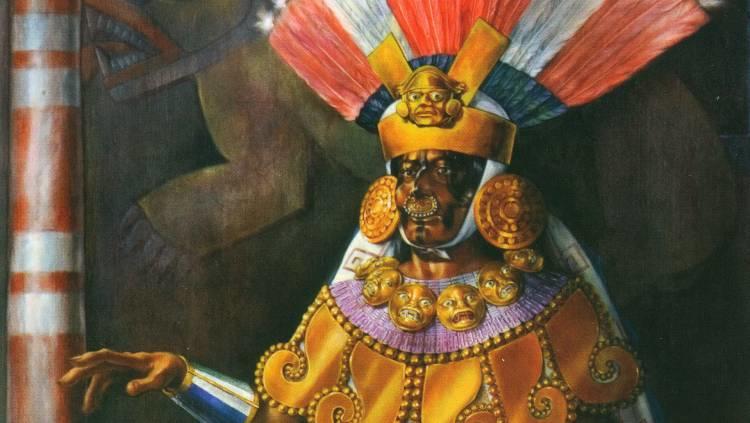
Whilst it is a little hard to believe that the Lord of Sipan was magic, there's no disputing he lived an interesting life as he ruled over the pioneering Moche tribes who were amongst the first with the ability to create beautifully intricate jewelry. A lot of the knowledge of the Moche tribes was never documented. What else did they get up to back then?
Though it's quite difficult to imagine just what life was like in Peru 2000 years ago, we no longer have to be left in confused wonderment of what the Moche tribe and the Lord of Sipan looked like. The representations of his life and his rule are fairly abstract to say the least - in every other 'portrait' that's been created he looks completely unreal; some even make him look like a westernized clown.
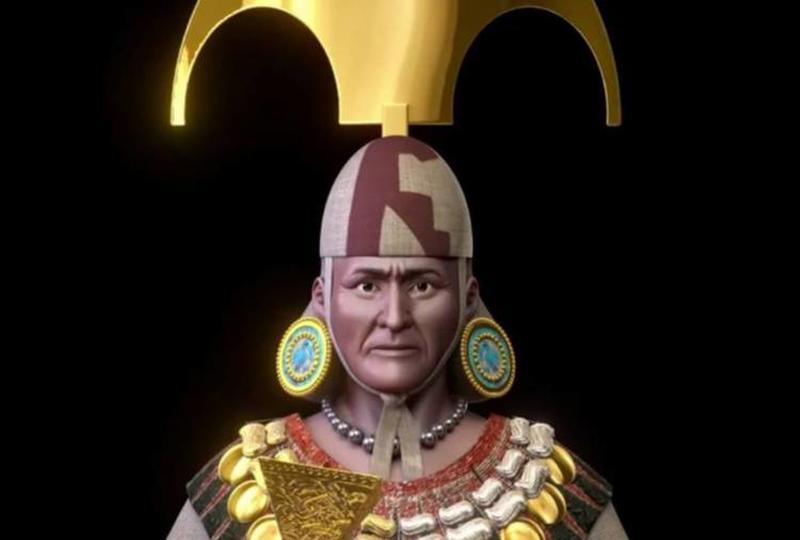
The late great Lord of Sipan's remains were found in 1987 in a tomb surrounded by some of the most bedazzling treasures you could even imagine. After forensic anthropologists decided to see what the Lord of Sipan would have looked like, it became pretty damn clear that there's a reason why he was seen as such a fearless warrior. Would you mess with the Moche warrior priest?
If we have to introduce you to Richard The Third then you really weren't paying attention in history class. Richard III was King of England for a relatively short duration, from 1483 until his death in 1485 when he was struck down in the Battle of Bosworth Field. His demise saw the end of the Plantagenet dynasty and he was the last ever King of the house of York. Sad times. His death took place in the final decisive battle of the Wars of the Roses which happened to be the event to conclude the Middle Ages in England.
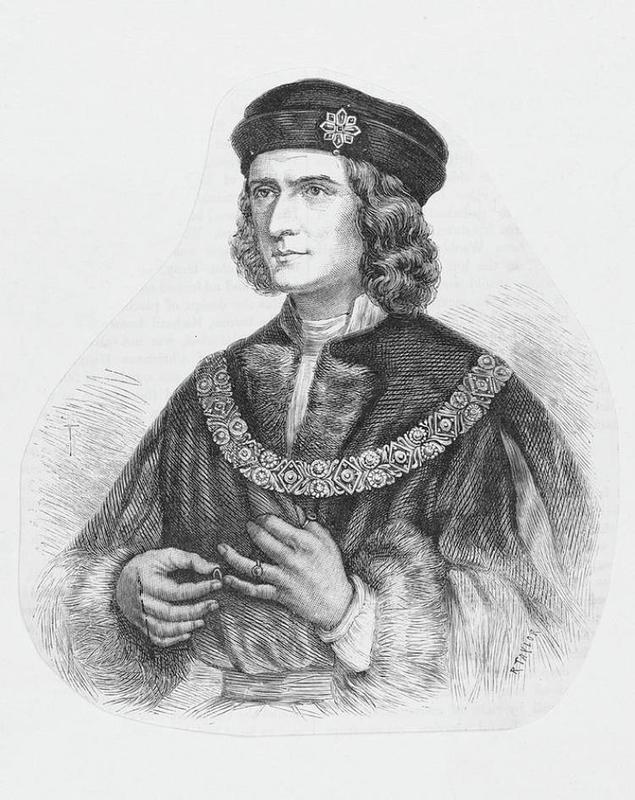
Richard the Third didn't live the longest life, he met his tragic demise at the age of 33. However, that's pretty good going for someone with curvature of the spine, a withered arm, and a limp.
There have been many versions of Richard The Third brought to life. William Shakespeare first brought him back to life through one of his infamous plays, then Game of Thrones writer George RR Martin decided to use him to create the pivotal plot character Stannis Baratheon. It would seem that history doesn't want to quite forget Richard III any time soon. Which is why it came as no surprise that his legendary face got a 3D rendering by forensic anthropologists.
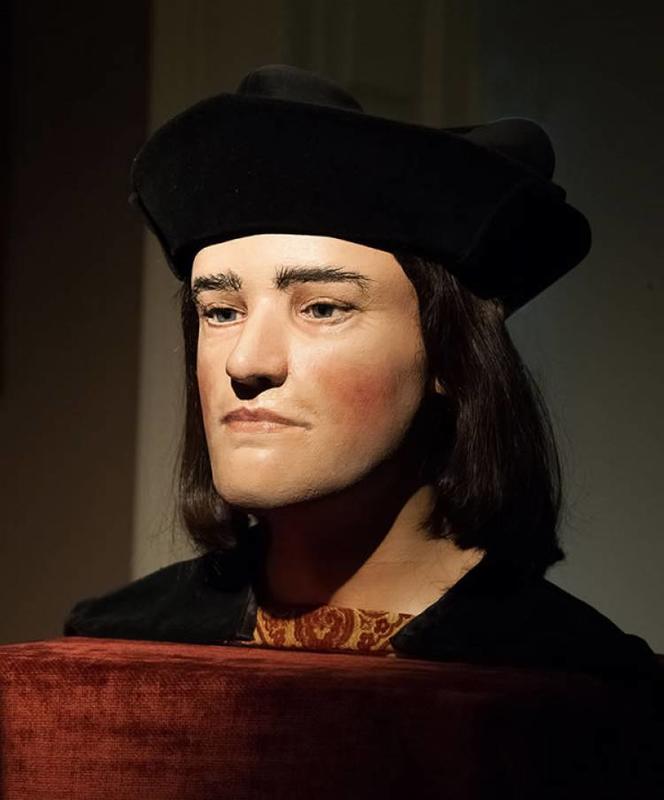
Richard The Third always seemed a bit shifty in his portraits - the most avid depiction of his infamous face was seen in Shrek. Whilst he probably didn't mutilate gingerbread men during his rule, they created a scarily accurate version of him, as did the anthropologists who gave us the most accurate view of him yet.
We know it's hard to believe that once upon a time our civilization went by the theory that the Earth was the center of our universe, rather than the sun. Thankfully, we had Nicolaus Copernicus to put us straight with his theory that revolutionized the way we see the world. Born in 1473, the renascence mathematician and astronomer formulated a model which still stands as perfectly accurate today.
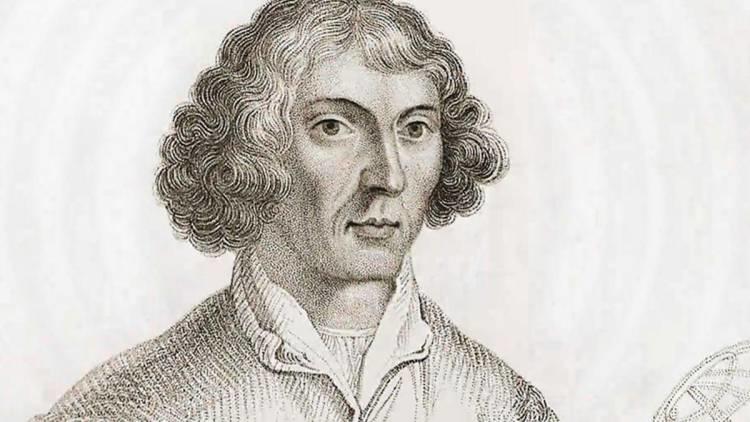
If only he were around today to deal with the flat earthers who refuse to get on board with the fact that Earth is spherical. Copernicus was born in Poland, but his fantastic brain took him all around Europe. Perhaps what is most tragic about his brilliant legacy was the fact that he published his revolutionary texts in the same year that he passed away in 1530.
None of the artistic portraits or other depictions of Copernicus seem to be all that life like - for centuries the astronomer and mathematician has been remembered as a rather hallowed and gaunt cartoonish character, so, it was only fair when technology and science evolved that they gave us a better picture of what he looks like. Turns out, he looks pretty damn miserable. God bless his tortured, intelligent soul.

But that's the burden of intelligence isn't it? As Oscar Wilde said, it is the stupid and the ugly that have it best in this world. He may have a point considering how absolutely fabulous Copernicus's brain was and how positively glum he looks thanks to the CGI facial reconstruction. At least it's nice to put a more accurate face to the very famous name.
Dante Alighieri is most widely known as the author of the Divine Comedy which has stood the test of time and has seen him dubbed as one of the most influential Italian poets of the Late Middle Ages. Alongside his awe-inspiring poetry, he was also highly regarded as a philosopher - well, the two kind of go hand in hand don't they?
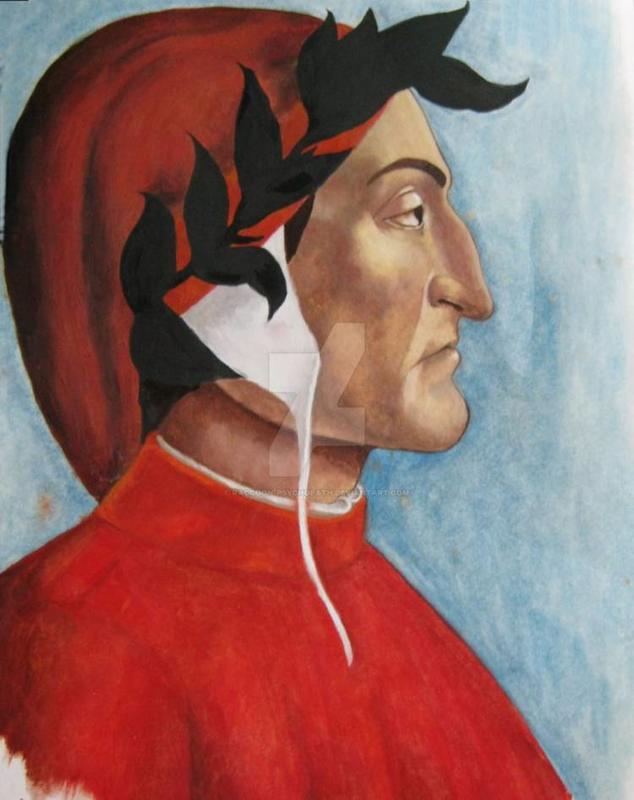
His most popular piece, the Divine Comedy, was epic in every sense of the word. His world-famous poem comprised of three segments, which represented the three tiers of the Christian afterlife; purgatory, heaven and hell. He lived to the relatively old age of 56 and met his demise in 1321. But his work proved to play a vital part in the inspiration of Western artists long after his death. He left quite the legacy.
As you can see from the CGI 3D rendered reconstruction of Dante, he seems to have aged beyond his years, given that he only died at the age of 56. He was often depicted as a stern figure with a hooked nose in his portraits, however he doesn't look all that mean in the facial reconstruction, does he? In fact, the reconstruction shows a bit of a softer side to the poet and philosopher.
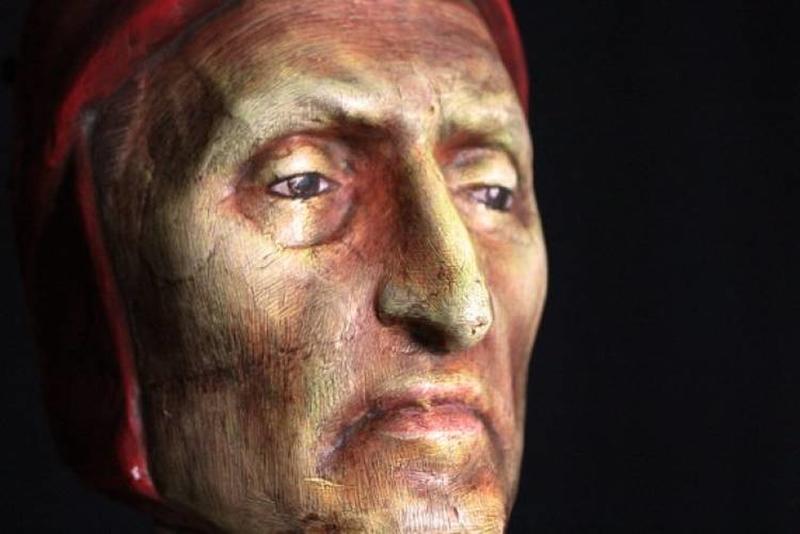
Dante's new face was created based on a bunch of measurements of Dante's skull, which were taken by a professor in 1920. The reconstruction was considerably kinder than any of his portraits, as he was portrayed with larger eyes, a more rounded jaw and a very gentle expression. So, not quite the monster that his aesthetic history would have us believe.
She's stunning, but who is she? Well, no one is quite sure who 'Ava' is. She may very well have been famous in her own life time. But in the 21st century, she happens to be the remains of a young woman that died over 3,700 years ago, which makes her the oldest corpse on this list to be recreated by forensic anthropologists and designers. The fact that enough of her remains have been preserved over such an extended amount of time is miraculous enough, however looking at what the experts recreated with such archaic remains is jaw-droppingly brilliant.
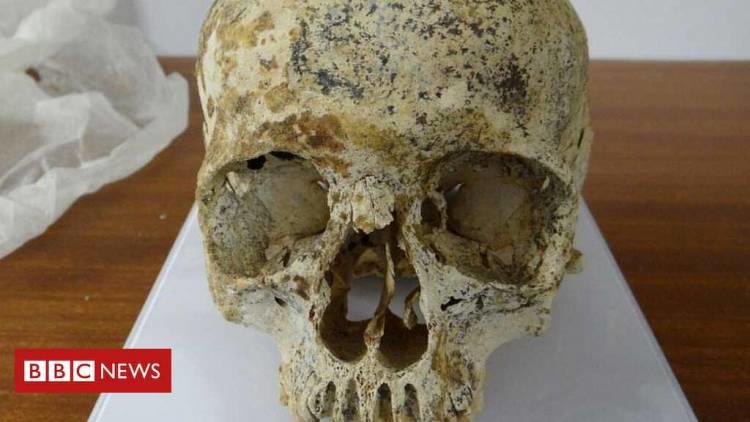
'Ava' is an abbreviation of Achavanich; a location which has been key to unlocking the secrets of the Bronze Age. The megalithic horse shoe shaped burial site is located near to Loch Stemser in Caithness, Scotland.
Why so much interest in Ava? As you can see the 3D rendering of the 3700 old woman doesn't look all too much different from the average Western woman that would pass you in the street. The image was created using her bones, including skull and teeth, and has become the subject of a long-term project by archaeologist Maya Hoole and her ridiculously talented team.

Disconcertingly, Maya and her team discovered that her skull was quite the abnormal shape which gave indication to the fact that in her lifetime which was lived so long ago she may have been the victim of deliberate binding. However, it's hard to say, considering she existed amongst a group of people known as the Beaker people and it was fairly common for them to have shorter and rounded skulls.
Do we really need to do an intro on Jesus Christ? Oh, go on then, just for the readers who are particularly averse to the bible. Jesus, or Jesus of Nazareth, is unarguably one of the most prominent figures in Christianity as the Son of God and the awaited Messiah of the Old Testament, which is how he went about getting his name Jesus Christ.

Whilst a lot of the bible may be read as fiction by some and fact by Christians, there has been a lot of skepticism as to whether Jesus ever actually existed or not. All modern scholars of antiquity have come together in agreement that Jesus did exist. Although the unenviable quest to find any trace of the real-life Jesus Christ proved to be more than just a little bit difficult.
It turns out that Jesus wasn't Jared Leto pretty with perfect abs after all. In fact, he looks a lot like your average carpenter. Perhaps Jesus on the crucifix was the first example of airbrushing in history? But hold on, let's take a step back from this one considering the fact that it was pretty impossible to determine which living man of that era was actually Jesus Christ.
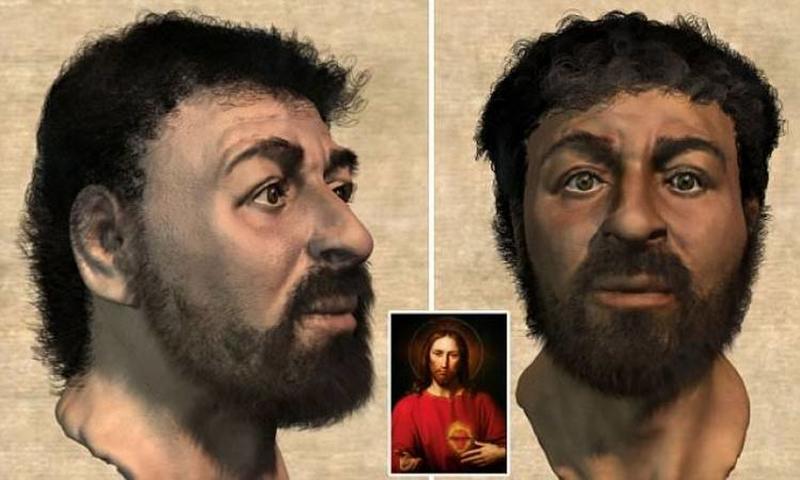
The reconstruction of the man who may have been Jesus or just some random guy that was found under the Shroud of Turin will probably come as quite a surprise to all of those who were expecting a white male Adonis. Turns out that Jesus is another historical figure that got whitewashed. The west really has to stop that nasty habit of stealing other cultures and adopting them as their own.
Writing an introduction to William Shakespeare seems a little silly. In fact, he's almost certainly as popular as Jesus. Okay, that may be a bit of a stretch, but who doesn't know about the most successful English Poet, Actor, Playwright that has ever lived? He even goes by the name of 'England's National Poet'. He's hung onto that title since the 1950s, which either means English poets really have to up their game or his literary reign is untouchable.
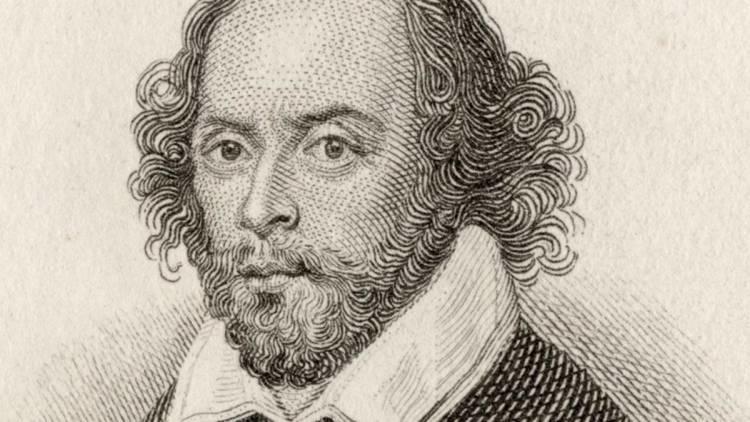
During his life time he invented 1700 words of his own, and much more impressively, wrote 37 plays and 154 sonnets, which are still influencing the current landscapes of poetry. The last play that Shakespeare wrote was the Tempest, before he died in the same year as his wife, Anne Hathaway, in 1616, aged approximately 52.
In Western cultures, not many people grow up not knowing what William Shakespeare looked like. Although before an expert team got to reconstructing his iconic face, the truth is that not many people would have a great idea what he looked like, considering that very few records of his personal life survived, including that of his physical appearance.
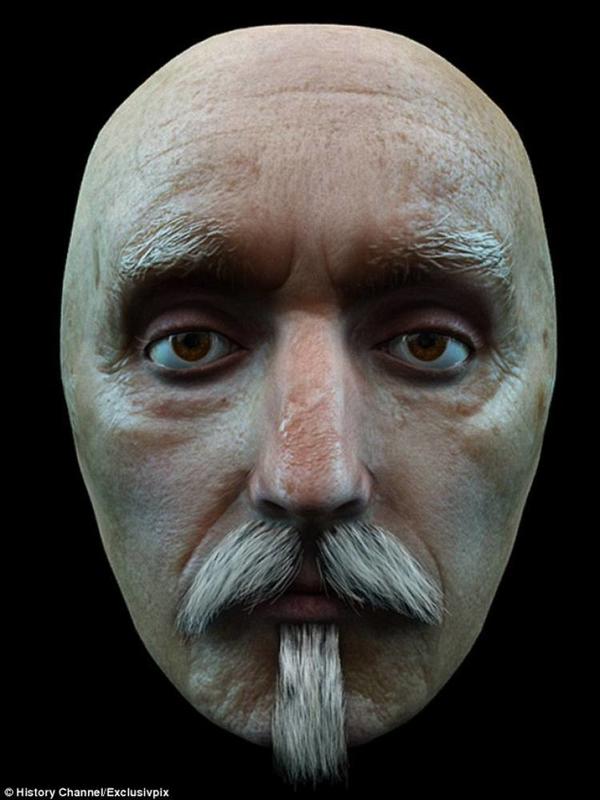
It's almost impossible to believe that the reconstruction of Shakespeare is the same person - just how wrong could the portrait artists have gotten his face? The reconstruction vividly shows each and every wrinkle that lay upon his face and captured the archetypal pensive stare of a playwright who was caught up in the macabre. The results from the forensic experiment are quite literally startling. It turns out that Shakespeare was actually quite handsome! What a lucky lady Anne was.
It's hard to believe that there was a time when America existed without a president. Someone had the unenviable job of being the first president and the role fell into the deft and capable hands of George Washington, born in 1732, who served a stint in the continental army during the American Revolutionary War. Good old George is still regarded as one of the founding Fathers of America. In fact, in his heyday he was regarded as the Founding Father of the Country.

It all sounds like a hell of a lot of responsibility, but he didn't do too bad of a job at it. His tenure as President of the United States lasted from 1789 to 1797, and he passed away in Mount Vernon, Virginia, just two years after the rule over his dominion ended.
Well hello Mr. President (we know, we know, wrong president, just thought you'd appreciate a Marilyn Monroe joke). It could be argued that the reconstruction of George Washington doesn't come close to being as impressive as some of the other iconic figureheads who have appeared on this list.
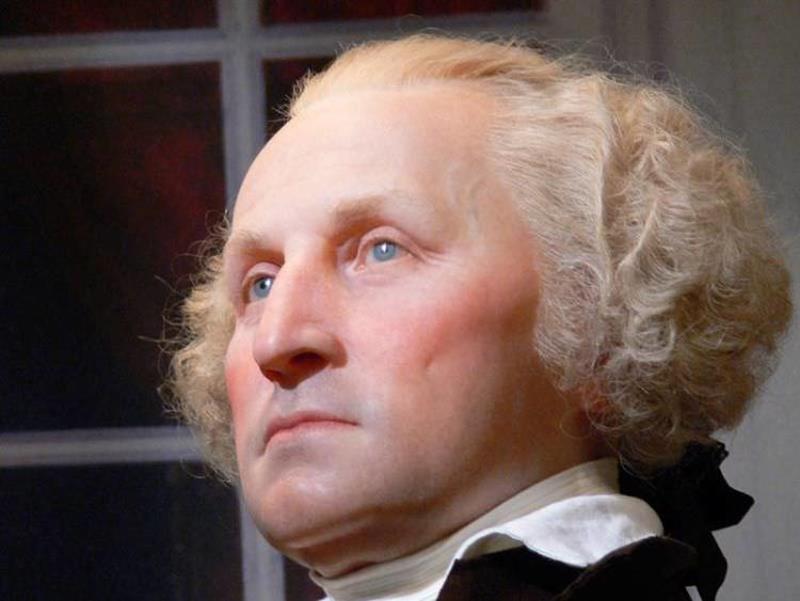
However, it's still all impressive considering the fact that the reconstruction process was slightly different - the awesome team of anthropologists didn't actually have a corpse to work with, and all they had was a black and white photograph of the first President of the United States. So, you may be a little underwhelmed by the results, but the process carried out by the New Jersey Medical school in Newark was genius and he looks a hell of a lot more realistic than he did on dollar bills.
Emily Dickinson is potentially one of the most famous female poets to have ever hailed from America - she is often considered to be the female counterpart of Walt Whitman. Dickinson was born in Massachusetts in 1830 and was quite the recluse. She attended a girls only school for only one year of her life and was thought to be very isolated, although those that she did encounter had a massive impact on her poetry.
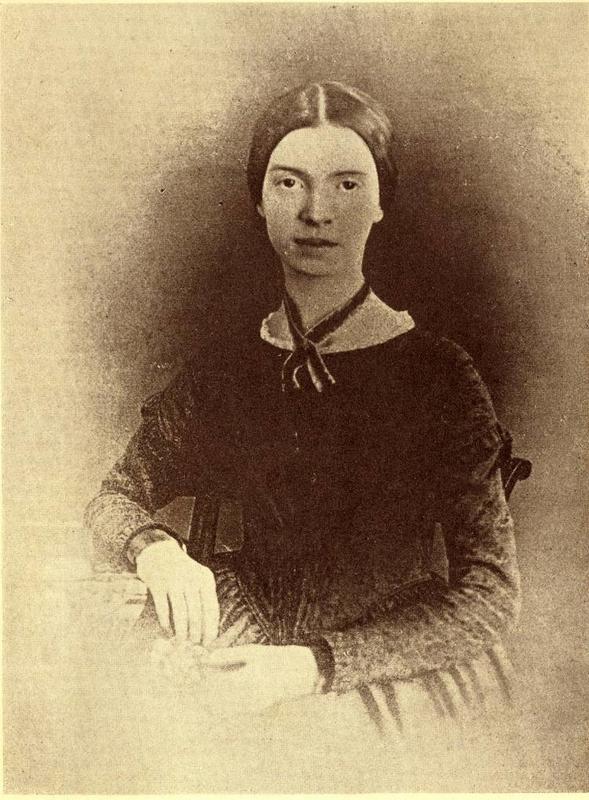
By the 1860s she lived in a way which meant she was almost completely cut off from the rest of the world, and very tragically, the first publication of her poetry was only brought out posthumously after her death in 1886. It took until 1890 for the world to be able to appreciate the poetry she so pensively penned in her agonizing isolation.
It's pretty hard to imagine a contemporary Emily Dickinson, isn't it? Considering the fact that she was one of the most poignantly romantic, talented authors to have ever lived, it's almost impossible to believe that she was actually this beautiful. Even if you don't know her work by name or title, chances are you'd recognize them because her poetry has an amazing way of hitting you like a ton of bricks.

She may not have been designed to fit into the 21st century with all the dating apps, Snapchat filters, and other stuff that makes our modern existence not all that romantic, but it's safe to say in this image of her she would have fit in as a hipster quite nicely. The reconstructed image of her made her as immortal as the literary world believes she is.
Marie Antoinette was a queen so infamous she even has her very own syndrome named after her; it's what happens when your hair suddenly turns white. Okay, so maybe that's not so well-known, but it is a pretty fun fact. Marie Antoinette happened to be the last Queen of France before the French Revolution, however, she was actually born as an Austrian Princess in 1755.

It seemed her life was nothing short of complicated as she spent the majority of her lifespan being used as a pawn to strengthen allegiances across Europe. It all sounds fairly tedious, doesn't it? She was eventually overthrown in 1792, which still enabled her to have a pretty impressive reign as Queen Consort. She even managed to coin the term 'let them eat cake' and was notorious for her decadence.
Imaging a woman as graceful as one of the most decadent Queens of France existing in the 21st century doesn't really work. The regal life isn't what it seemed to be back then, which is why the modern depiction of Marie Antoinette dressed as a headstrong, savvy business woman is a little weird.
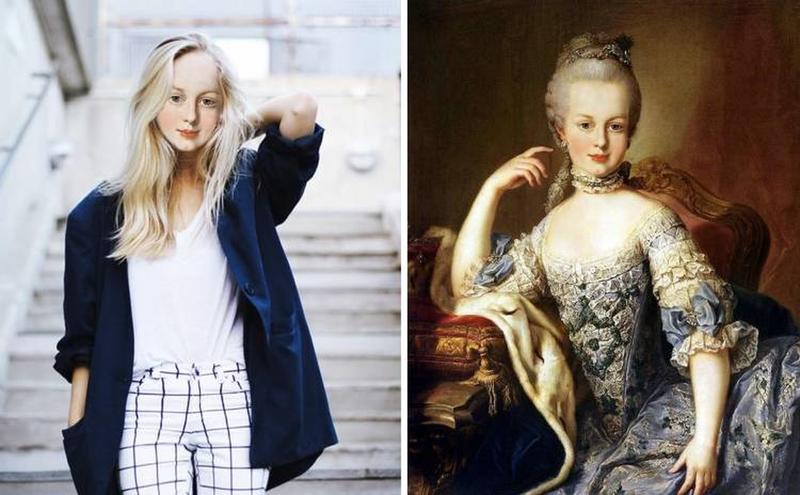
But that's not to say she doesn't look stunning - her fair skin and even fairer hair make her look even more delicate than how she seemed when she was surrounded by decadence and refinery in flowing floral gowns. Whilst in her own time, she comes across as fairly demure and sultry, in our time she looks a little like a frightened rabbit that knows she is so far away from home. Let's hope she never actually runs away in a time machine.
Of all the role models a woman could have, no one quite beats Annie Oakley to the mark. She may not be all that well known, but the American exhibition sharp shooter's life story is nothing if not fascinating. Annie was born in 1860 and received a flood of infamy by the age of just fifteen. In potentially one of the most emasculating feats ever, young Annie was challenged to a shooting contest by the infamous Frank E. Butler, who wasn't quite expecting to be shown up so badly by a girl.

Long story short; they got married and lived happily ever after, well, at least until Annie and Frank got involved in a car accident which Annie sadly never recovered from. She eventually passed away in November 1926. Although history won't be quick to forget her.
Each photograph of Annie Oakley that stood the test of time and ended up on Google image search is nothing but stunning. But now, we also have a clearer idea of what Annie Oakley would look like today. The reconstructive artists created an image that makes it almost devastating to consider that she's not around today with her beautifully fierce attitude.
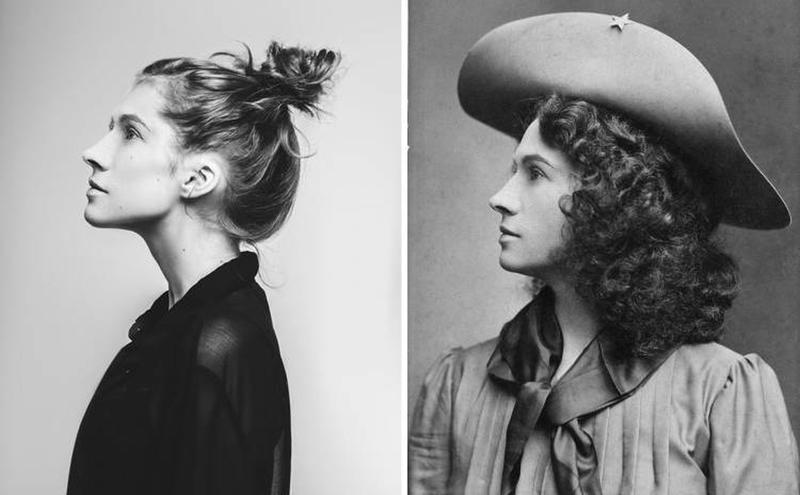
Weinstein wouldn't stand a chance if Annie was on the scene. One of her most infamous quotes, which made her so internationally loveable was "I ain't afraid to love a man, I ain't afraid to shoot him either". When's the last time you heard something so poignantly romantic yet ferocious as that quote? Reminiscing about the life of Annie makes it evident that it is entirely possible to miss someone that you've never met.
Ah, Tutankhamun probably the only historical figure you'll remember learning about in school, but how much do you actually remember? Shall we do a little recap? Tutankhamun was one of the most infamous Egyptian pharaohs to enjoy a ruling of the 18th dynasty during a time period which is historically referred to as the 'New Kingdom'. He became pretty popular, he even got himself a little nickname: 'King Tut'.
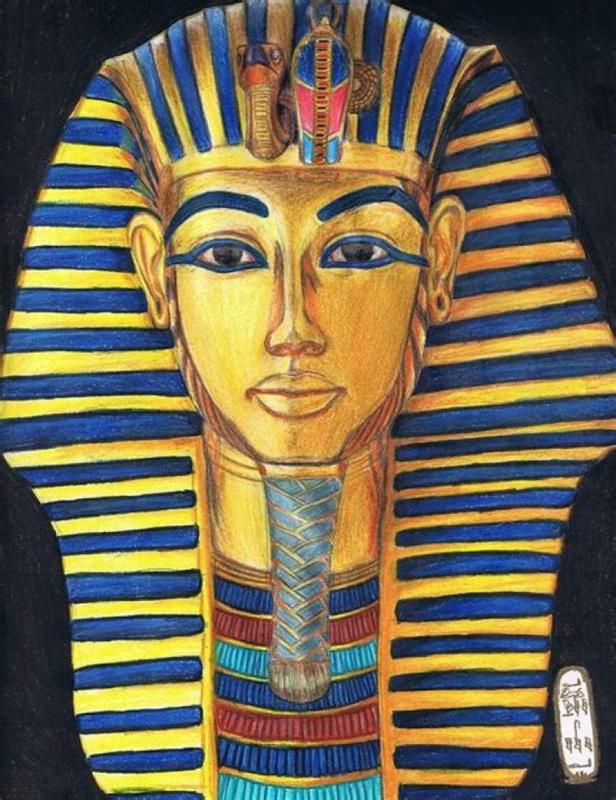
He was a man who went by many names which all seem to point towards his divinity amongst the Egyptians, even though he became a pharaoh at the age of nine years old. He had pretty good innings as a pharaoh and his rule lasted for around ten years before his suspicious death in 1324 B.C., which scientists still haven't been able to confirm the cause of.
Given the ominous cause of his death which saw his demise at a young age, it was only a matter of time before a 'virtual 3D autopsy' was carried out on Tutankhamun. This saw the humanity of the historical golden figurehead come to life and the results aren't quite what you'd expect. It only took 2000 CAT scans of his mummy before eager audiences received a piece of Ancient Egyptian history that came to life before their eyes.
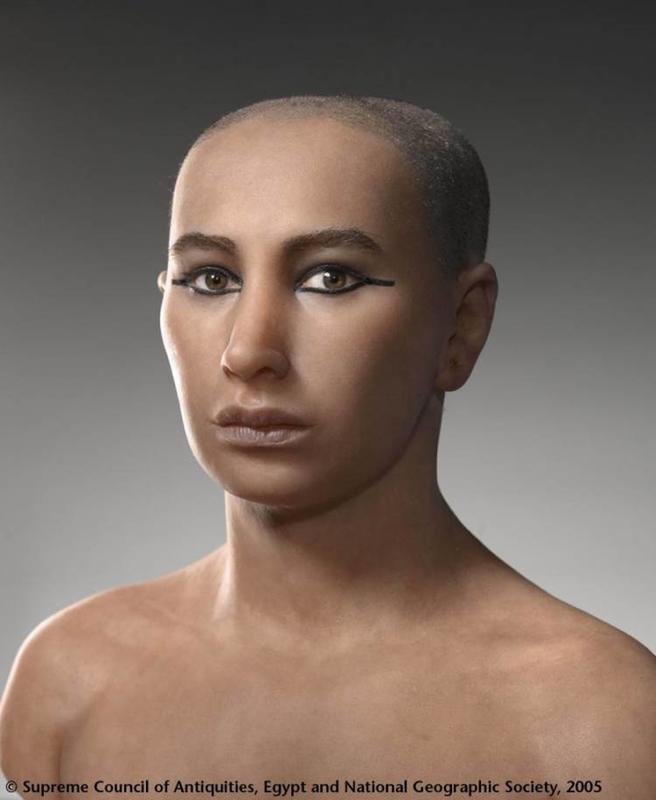
In 2014 history buffs were shocked by the revelation of what King Tut looked like, he was an icon long associated with beauty, but the results weren't pretty. What do you expect from an era when it was more than appropriate to marry your own sisters? Chances are Tutankhamun lived a life afflicted by his incestuous creation.
As soon as you hear the name Cleopatra you instantly think of the last active pharaoh of Egypt - so what made her so 'first name famous' in the first place? Cleopatra VII Philopator was a member of the Ptolemaic dynasty who was also a member of Macedonian Greek origin who saw their rule shortly after the death of Alexander the Great. Other members of her origin refused to speak Egyptian and only used Greek to communicate. Interestingly, that is the sole reason that the Greek language was used on official court documents such as the Rosetta Stone.
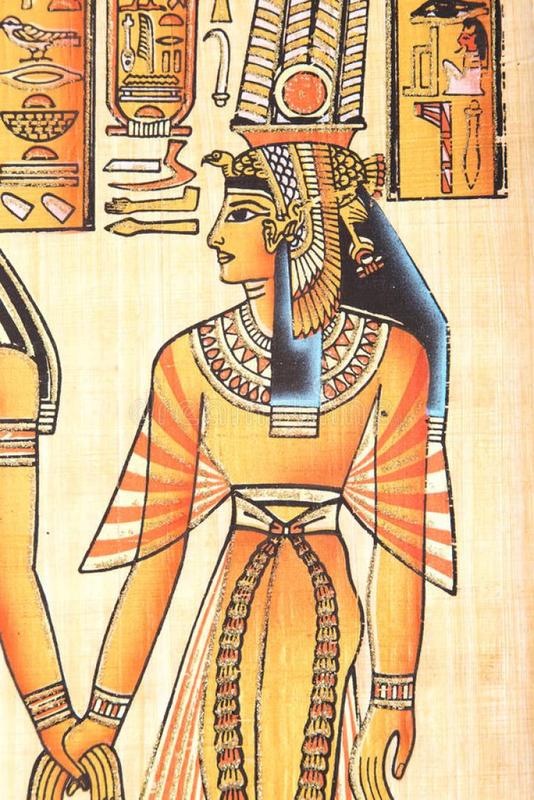
However, Cleopatra was keen to adopt the Egyptian language and culture as she represented herself as the one and only reincarnation of the Egyptian goddess Isis. Perhaps she was just on a little bit of an ego trip.
Watching Cleopatra's face come to life is awe inspiring. As one of the most famous women to have ever graced the planet, it's only natural that experts were keen to see what she really looked like. The standards of beauty have changed significantly in recent years, but if it could be said that anyone's beauty was timeless, no one fits that bill better than Cleopatra. Whilst it cannot be said that Cleopatra isn't beautiful, whether she can be aesthetically regarded as a Goddess is quite another thing.

But it's not all about looks, right? Which seems ironic to say in an article all about seeing historical figures come to life, but Cleopatra's real-life face may be the least disappointing on the list - you'll have to see for yourselves and stick with us until the end!